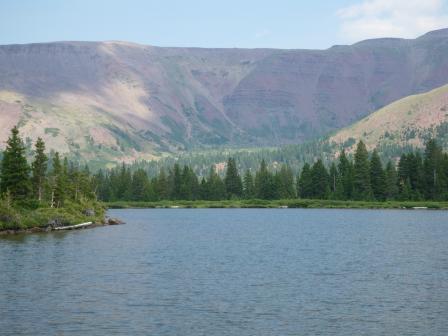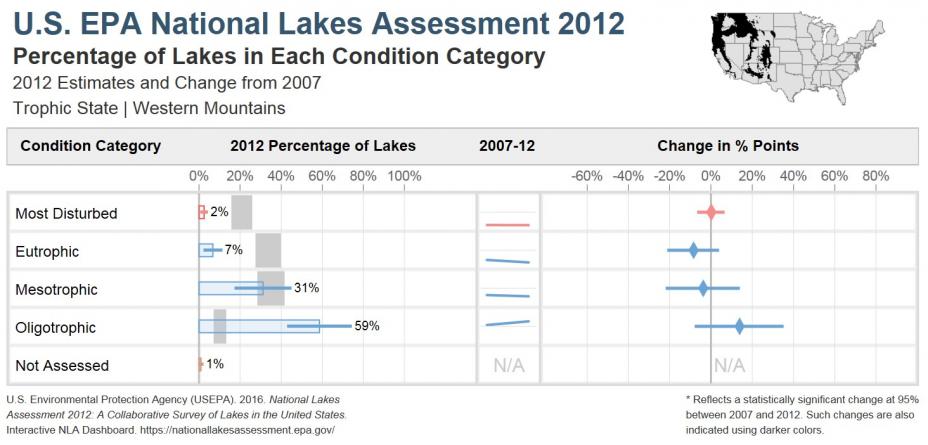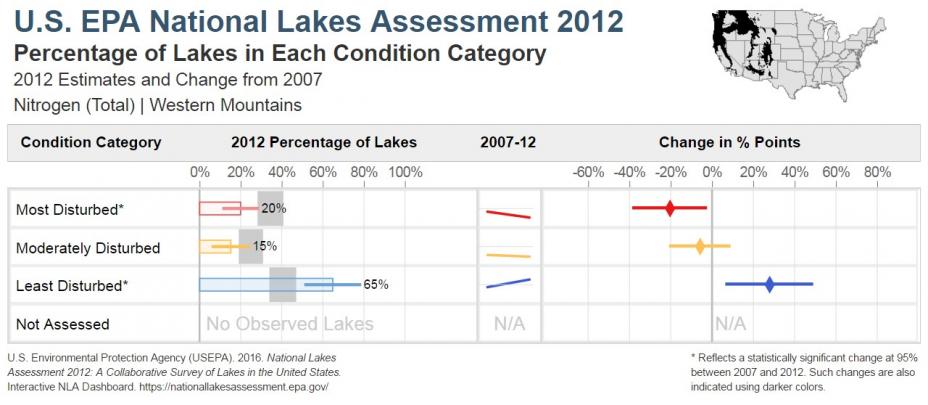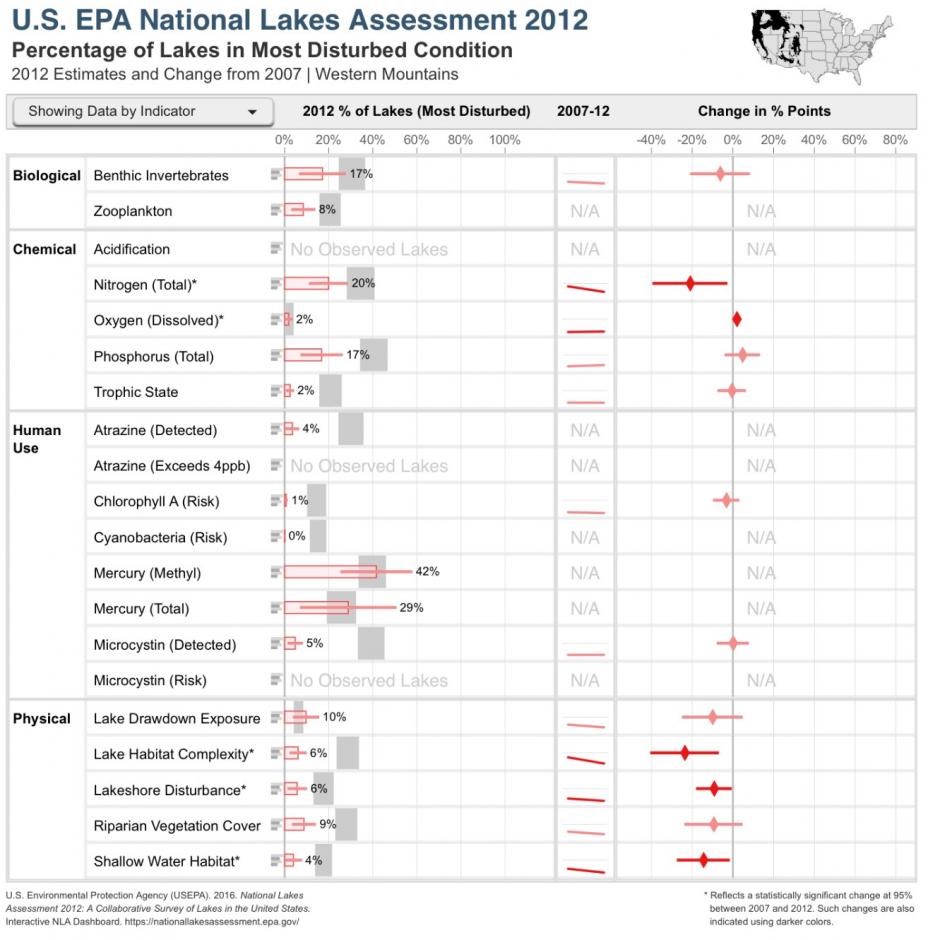Western Mountains Ecoregion - NLA 2012 Results
- Overview
- Coastal Plains
- Northern Appalachians
- Northern Plains
- Southern Appalachians
- Southern Plains
- Temperate Plains
- Upper Midwest
- Western Mountains
- Xeric
- NLA Dashboard
A total of 8,112 lakes in the Western Mountains ecoregion are represented in the NLA. Of these lakes, about 73% are natural and 27% are man-made.
Key Results
Trophic State and Key Stressors: The NLA uses trophic state as an important indicator of lake condition and assesses the extent of key stressors in the nation’s lakes.
- In the Western Mountains, 2% of lakes are rated as most disturbed based on trophic state, 7% are eutrophic, 31% are mesotrophic, 59% are oligotrophic, and 1% are unassessed.
- The most widespread stressors assessed are nitrogen (20% of lakes), phosphorus (17%) and lake drawdown exposure (10%).
Human Use Condition: Cyanobacteria is one of three algal toxin related indicators presented in the NLA (see also chlorophyll a and microcystins). It serves as a proxy for the presence of algal toxins.
 Henry's Fork Lake in Idaho sampled during NLA 2012. Photo: Ben Brown.Based on cyanobacteria cell counts, less than 1% of lakes in the Western Mountains are in the most disturbed condition (i.e., pose a high risk of exposure to algal toxins).
Henry's Fork Lake in Idaho sampled during NLA 2012. Photo: Ben Brown.Based on cyanobacteria cell counts, less than 1% of lakes in the Western Mountains are in the most disturbed condition (i.e., pose a high risk of exposure to algal toxins).
Change from 2007 (for lakes >4 hectares)*:
- For the Western Mountains, the NLA reports a 21% decrease in the proportion of lakes in most disturbed condition between 2007 and 2012 for nitrogen.
- There was also a decrease in the proportion of lakes in the most disturbed condition based on the following indicators:
- lake habitat complexity (24% decrease),
- lakeshore disturbance (9% decrease), and
- shallow water habitat (14% decrease).
- There was an increase of 2% in the proportion of lakes in the most disturbed condition for dissolved oxygen.
To access more indicator graphics please visit the interactive NLA Dashboard.
* The change analysis is based on information from two points in time – 2007 and 2012. The change in condition analysis only considers lakes 4 hectares and larger because smaller lakes were not sampled in 2007.



